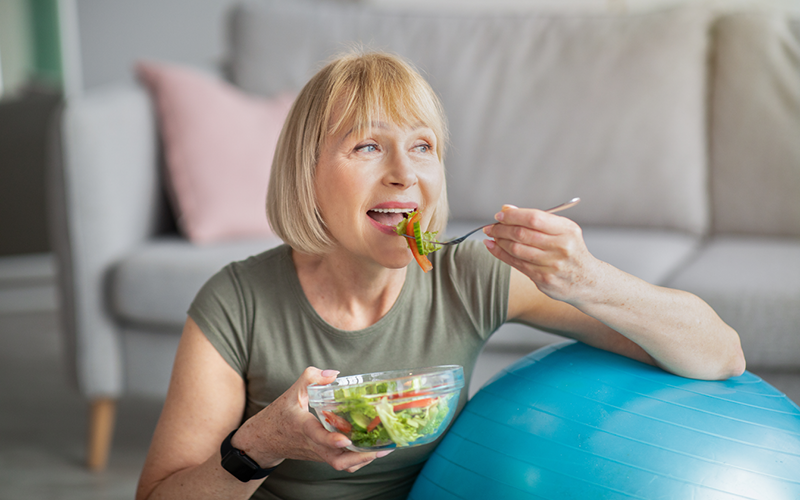
April is Parkinson's Awareness Month. While there is no specific diet that will reverse Parkinson’s, eating a healthful diet may assist in reducing symptoms and slowing disease progression to help you live healthier longer. Keep reading for 6 helpful nutrition recommendations for those living with Parkinson’s disease.
Reduce Constipation.
Constipation is common for Parkinson’s sufferers due to medications and slower gut motility related to decreased physical mobility. Following a balanced diet rich in fiber can help reduce constipation. A balanced diet includes foods from all food groups: protein (meat, beans, dairy, tofu, nuts, tempeh); grains (rice, whole wheat bread, quinoa, pasta); fruits (berries, citrus, banana, melon); vegetables (broccoli, greens, cauliflower, carrots, peas, potatoes, asparagus, squash).
Consume Adequate Fluids.
Many Parkinson’s medications are drying. Plus, people with Parkinson’s will sometimes drink fewer fluids in order to reduce their trips to the bathroom, making it difficult to consume enough liquid to remain hydrated. Dehydration can result in increased confusion, fatigue, risk for urinary tract infections, and kidney problems. So, consider adding foods that are high in water content, such as watermelon, popsicles, gelatin, broth, tomatoes, skim milk, soymilk, cantaloupe, honeydew, peaches, broccoli, carrots, lettuce, kale, oranges, pineapple, apples, and applesauce.
Eating with Dignity.
Tremors with Parkinson’s can be a big barrier to self-feeding, and often using utensils is a major challenge. To help, consider making foods bite-sized, serve food in a handheld format like a sandwich, wrap, burrito, quesadilla, etc., and always serve liquids (especially hot liquids!) in a lidded cup or mug (a large straw may be helpful, as well).
Chewing and Swallowing Difficulties.
People with advanced Parkinson's may experience difficulty chewing and swallowing. Make sure to grind all meat to a ground beef consistency. Cook vegetables until soft. Keep breads and grains soft and thin so they don’t get too gummy in the mouth, such as using thinly sliced sandwich bread as opposed to a hamburger bun. Avoid whole nuts and large hard candy. Use gravy and sauce liberally to soften foods. Sometimes people with Parkinson’s develop even worse chewing and swallowing problems and may require all foods to be at a pureed consistency. Liquids (other than, but sometimes, water) may require thickening as well to reduce aspiration risk.
Medication Interaction.
Carbidopa-levodopa is the most common medication to treat Parkinson's symptoms; however, this medication is absorbed in the small intestine. Protein may disrupt the absorption of carbidopa-levodopa. Therefore, consider taking this medication with a low-protein snack (fruit, vegetables, applesauce, crackers, etc.), and save protein for a later time.
Exercise.
While not a nutrition tip, staying active and mobile reduces constipation and may help relieve pain from sitting or lying down too long. Join one of our Exercise for Parkinson’s classes at a YMCA near you!
The Y also offers one-on-one nutrition counseling with a Registered Dietitian who can provide specialized nutrition education for you or your loved one. Fill out a nutrition interest survey here if you would like to be contacted by a member of our team!